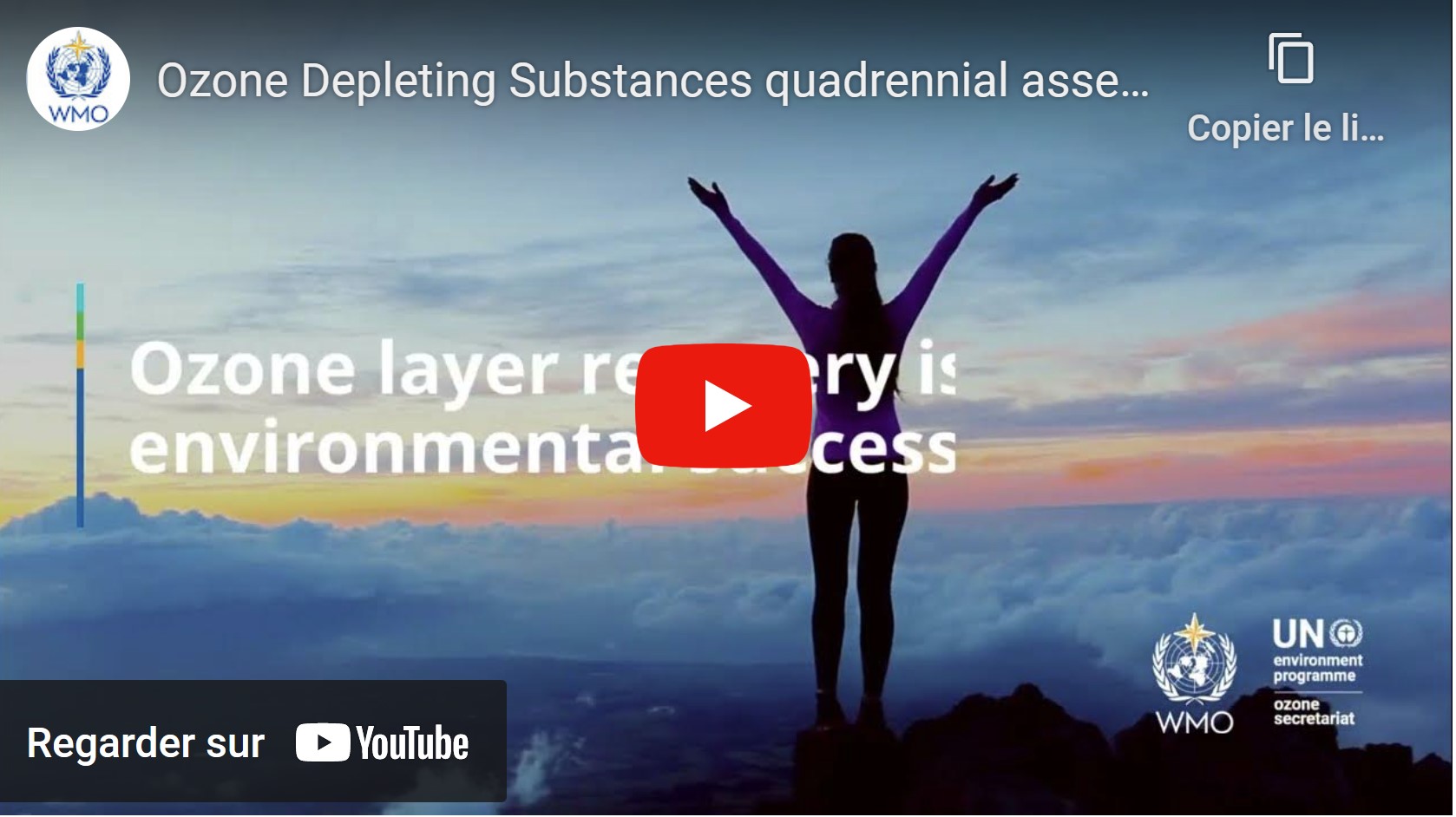
The ozone layer is on track to recover within four decades, with the global phaseout of ozone-depleting chemicals already benefitting efforts to mitigate climate change. This is the conclusion of a UN-backed panel of experts, presented today at the American Meteorological Society’s 103rd annual meeting. Examining novel technologies such as geoengineering for the first time, the panel warns of unintended impacts on the ozone layer.
The UN-backed Scientific Assessment Panel to the Montreal Protocol on Ozone Depleting Substances quadrennial assessment report, published every four years, confirms the phase out of nearly 99% of banned ozone-depleting substances has succeeded in safeguarding the ozone layer, leading to notable recovery of the ozone layer in the upper stratosphere and decreased human exposure to harmful ultraviolet (UV) rays from the sun.
If current policies remain in place, the ozone layer is expected to recover to 1980 values (before the appearance of the ozone hole) by around 2066 over the Antarctic, by 2045 over the Arctic and by 2040 for the rest of the world. Variations in the size of the Antarctic ozone hole, particularly between 2019 and 2021, were driven largely by meteorological conditions. Nevertheless, the Antarctic ozone hole has been slowly improving in area and depth since the year 2000.
“That ozone recovery is on track according to the latest quadrennial report is fantastic news. The impact the Montreal Protocol has had on climate change mitigation cannot be overstressed. Over the last 35 years, the Protocol has become a true champion for the environment,” said Meg Seki, Executive Secretary of the United Nations Environment Programme’s Ozone Secretariat. “The assessments and reviews undertaken by the Scientific Assessment Panel remain a vital component of the work of the Protocol that helps inform policy and decision makers.”
Impacts on climate change
The 10th addition of the Scientific Assessment Panel reaffirms the positive impact that the treaty has already had for the climate. An additional 2016 agreement, known as the Kigali Amendment to the Montreal Protocol, requires phase down of production and consumption of some hydrofluorocarbons (HFCs). HFCs do not directly deplete ozone, but are powerful climate change gases. The Scientific Assessment Panel said this amendment is estimated to avoid 0.3–0.5°C of warming by 2100 (this does not include contributions from HFC-23 emissions).
“Ozone action sets a precedent for climate action. Our success in phasing out ozone-eating chemicals shows us what can and must be done – as a matter of urgency – to transition away from fossil fuels, reduce greenhouse gases and so limit temperature increase,” said WMO Secretary-General Prof. Petteri Taalas.
The latest assessment has been made based on extensive studies, research and data compiled by a large international group of experts , including many from the World Meteorological Organization (WMO), United Nations Environment Programme (UNEP), National Oceanic and Atmospheric Administration (NOAA), National Aeronautics and Space Administration (NASA) and European Commission.
Geoengineering
For the first time, the Scientific Assessment Panel examined the potential effects on ozone of the intentional addition of aerosols into the stratosphere, known as stratospheric aerosol injection (SAI). SAI has been proposed as a potential method to reduce climate warming by increasing sunlight reflection. Yet the panel cautions that unintended consequences of SAI “could also affect stratospheric temperatures, circulation and ozone production and destruction rates and transport.”
About the Montreal Protocol
The Montreal Protocol is a global agreement to protect the Earth’s ozone layer by phasing out the chemicals that deplete it. The landmark agreement entered into force in 1989 and it is one of the most successful global environmental agreements. Thanks to the collaborative effort of nations around the world, the ozone layer is on its way to recovery and many environmental and economic benefits have been achieved.
About the UN Environment Programme (UNEP)s
UNEP is the leading global voice on the environment. It provides leadership and encourages partnership in caring for the environment by inspiring, informing and enabling nations and peoples to improve their quality of life without compromising that of future generations.

Posted on 2023-01-28 15:10









Comments